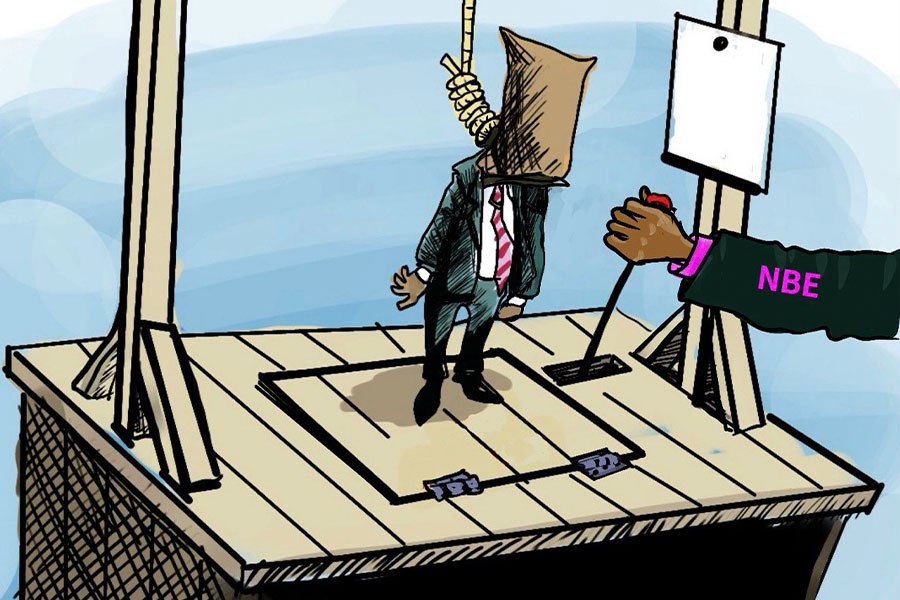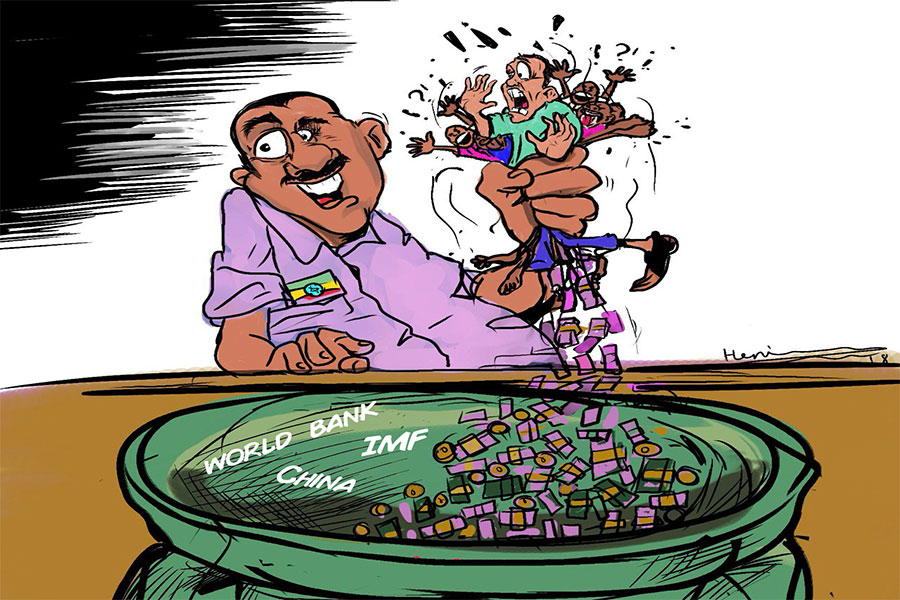
Photo Gallery | 180533 Views | May 06,2019
Sep 14 , 2025.
The foreign-exchange market has rarely seen a week like the one that unfolded last week. A market usually defined by small and synchronised moves fractured when Amhara Bank blasted past convention, posting a cash buying rate of 145 Br to the dollar and a selling rate of 147.9 Br, rates no lender had dared to post. Its forex managers' decision translated into a 4.5pc premium over the state-owned Commercial Bank of Ethiopia (CBE) on both sides of the spread.
Amhara Bank rewrote the market’s top line, with a gap that was as striking as against the National Bank of Ethiopia’s (NBE) own weighted average. The Central Bank, operating without a governor after the departure of Mamo Mihretu two weeks ago, showed a cash rate that climbed from 142.66 Br on September 8 to 143.61 Br by September 13, 2025. Amhara Bank’s bid sat 2.61 Br above that yardstick, unveiling how far a single institution was willing to reach when the referee stayed silent.
Not only did Amhara Bank price above the regulator and the CBE, it beat the market’s average buying quote of 139.36 Br by a hefty 5.64 Br. Its offer was 1.7 standard deviations above the mean. Other lenders moved, but none came close.
Oromia Bank, price setter for months in a row, lifted its bids steadily to 142.69 Br and held them there, yet still trailed Amhara Bank by more than three Birr. The rest of the field largely stayed between 137.6 Br and 143.6 Br for buying quotes and preserved the industry’s habitual two percent bid-ask spread. Gada Bank trimmed that spread to 1.98pc on September 12 and 13, but the adjustment was more cosmetic than competitive.
At the opposite end, Berhan Bank cemented its status as the market’s bargain counter, locking its buying rate at 137.6 Br all week.
Across the board, buying quotes edged higher. The Central Bank’s cash rate crept upward in small steps, while commercial banks enacted fractional adjustments meant to stay inside the herd. By September 13, most banks quoted around 143 Br and 145 Br on the selling side. CBE itself nudged its numbers up by roughly two Birr from the previous week, a notable shift for a bank that rarely strays from policy orthodoxy, but remained close to the industry's midpoint.
Addis International and Ahadu banks kept both sides of their quotes unchanged for all six days last week, signalling either comfort with their liquidity positions or reluctance to chase volume at steeper prices.
The Brewed Buck, as a result, drifted modestly weaker against the Green Buck. Average buying quotes rose to 139.36 Br while average selling rates touched 142.15 Br. However, those gentle moves were eclipsed by Amhara Bank’s leap.
For regulators, the timing could hardly be worse. With no Governor at the helm, the NBE has offered no fresh guidance. Its own zero-spread policy (identical buying and selling quotes) remained more as a legacy of administrative pricing than as a true market steer. In that vacuum, commercial banks were left to read the tape in isolation. Most opted for caution, inching rates higher while guarding their two-percent spread.
Amhara Bank chose a different playbook, effectively daring rivals to follow or risk losing inflows.
Liquidity considerations help explain the divergence. Banks compete aggressively for hard currency from remittances and exporters, and an extra Birr or two can redirect flows overnight. By vaulting past 145 Br, Amhara Bank may have hoped to mop up dollars before an anticipated wave of depreciation, or to shore up its own foreign-asset position. Either way, the gambit resets expectations.
Whether its forex managers were struggling with liquidity or betting on further depreciation mattered less than the signal they sent. Price discipline could vanish swiftly when the central anchor loosened. Once a new high print is established, customers tend to treat it as a reference, making it harder for peers to trade back down without haemorrhaging volume.
Last week also exposed how thin the line is between orderly coexistence and fragmentation. Until early September, Oromia Bank’s slightly above-market quotes had defined the ceiling. Spreads across all banks, save the Central Bank, held at a uniform two percent. When Amhara Bank punctured that ceiling, the market’s centre of gravity shifted overnight. Much will depend on the Central Bank’s ability to reclaim its signalling role, either by naming a Governor or by telegraphing a policy path that discourages leapfrogging.
PUBLISHED ON
Sep 14,2025 [ VOL
26 , NO
1324]

Photo Gallery | 180533 Views | May 06,2019

Photo Gallery | 170727 Views | Apr 26,2019

Photo Gallery | 161803 Views | Oct 06,2021

My Opinion | 137291 Views | Aug 14,2021

Nov 1 , 2025
The National Bank of Ethiopia (NBE) issued a statement two weeks ago that appeared to...

Oct 25 , 2025
The regulatory machinery is on overdrive. In only two years, no fewer than 35 new pro...

Oct 18 , 2025
The political establishment, notably the ruling party and its top brass, has become p...

Oct 11 , 2025
Ladislas Farago, a roving Associated Press (AP) correspondent, arrived in Ethiopia in...